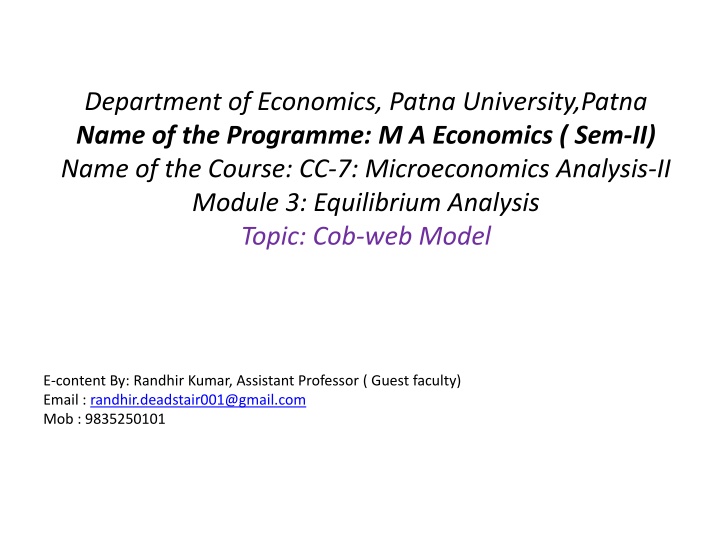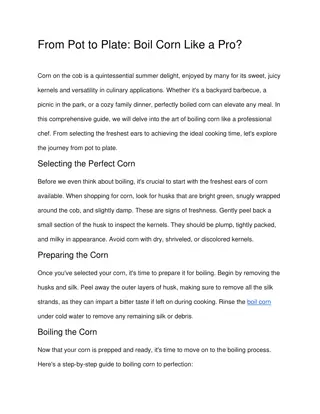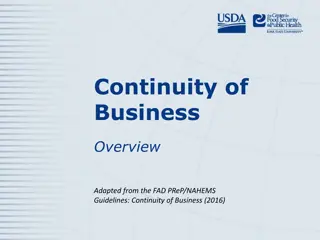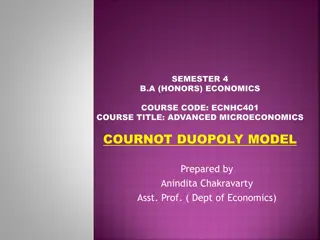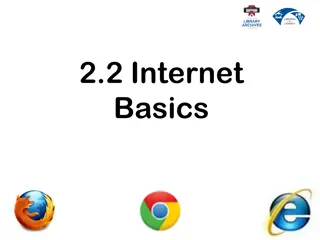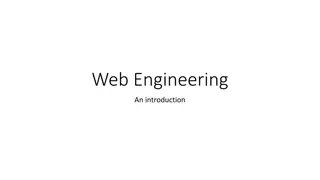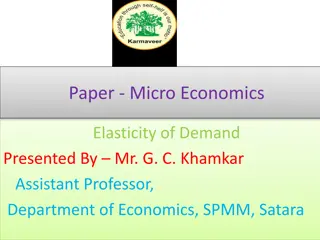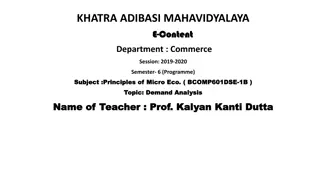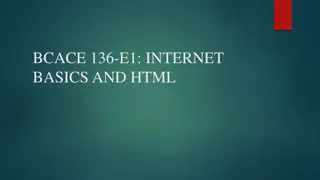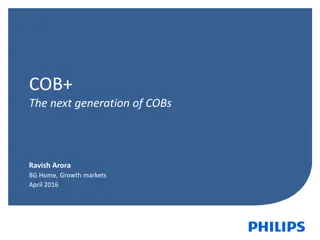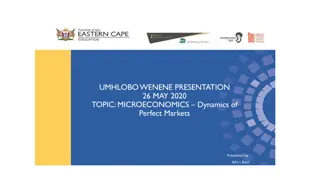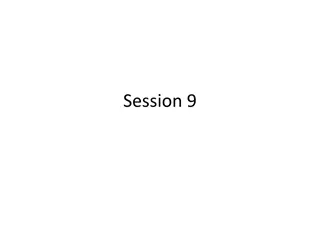The Cob-Web Model in Microeconomics Analysis
The Cob-Web Model, first proposed by Nicholas Kaldor, explains cyclic fluctuations in farm product output and prices. It is based on lag concepts, with supply depending on previous prices in the agricultural sector. The model consists of three types of fluctuations: Convergent, Continuous, and Divergent. Perfect competition, perishability of commodities, and price-supply interactions are key assumptions underlying the model.
Uploaded on Sep 29, 2024 | 2 Views
Download Presentation

Please find below an Image/Link to download the presentation.
The content on the website is provided AS IS for your information and personal use only. It may not be sold, licensed, or shared on other websites without obtaining consent from the author.If you encounter any issues during the download, it is possible that the publisher has removed the file from their server.
You are allowed to download the files provided on this website for personal or commercial use, subject to the condition that they are used lawfully. All files are the property of their respective owners.
The content on the website is provided AS IS for your information and personal use only. It may not be sold, licensed, or shared on other websites without obtaining consent from the author.
E N D
Presentation Transcript
Department of Economics, Patna University,Patna Name of the Programme: M A Economics ( Sem-II) Name of the Course: CC-7: Microeconomics Analysis-II Module 3: Equilibrium Analysis Topic: Cob-web Model E-content By: Randhir Kumar, Assistant Professor ( Guest faculty) Email : randhir.deadstair001@gmail.com Mob : 9835250101
Introduction The term Cob-Web Theory was first postulated by Nicholas Kaldor in 1934. This model explains the regularly recurring cycles in the output and prices of the farm products. It is based upon lag concept i.e the supply of current time period depends upon the prices of previous period especially in the agricultural sector. There is a lag in supply side but on the demand side there is no lag i.e current demand depends upon price of the current year.
Supply side equation St= a + bPt-1 where, a= intercept b= regression coefficient and slope of supply curve. Pt-1= price of the previous year. Demand side equation Dt= c + dPt where, c= intercept. d= regression coefficient and slope of demand curve. Pt= price of the current year.
Assumptions There is perfect competition so that the production plan of producer will not affect the market. Price is the function of previous period s supply and vice-versa. The commodity concerned is perishable. This shows that this theory is applicable to agricultural sector.
Cobweb model has three fluctuations 1. Convergent Fluctuation ( Damped oscillations) Starting with a large supply and low price in the first period , there would be a very short supply and high price in the consequent period and this cycle continues till the price approaches to equilibrium. In this the slope of supply curve is greater than slope of demand curve which means elasticity of demand is greater than elasticity of supply. This is stable dynamic equilibrium as price will tend towards the equilibrium.
2. Continuous Fluctuation ( Perpetual Oscillations) In this elasticity of demand is equal to the elasticity of supply .
3. Divergent fluctuation (Explosive Oscillations) Here the slope of supply curve is less than the slope of demand curve which means the elasticity of demand is less than the elasticity of supply. This is unstable dynamic equilibrium as the prices and quantities tend to move away from the equilibrium price level.
